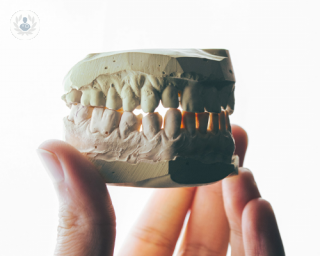Apicoectomy
Dr Michael Sultan - Endodontics
Created on: 06-15-2018
Updated on: 04-26-2023
Edited by: Conor Dunworth
What is an apicoectomy?
An apicoectomy is also known as root end surgery, or a root resection, root-end filling, or retrograde root canal treatment. An apicoectomy is an endodontic procedure which involves removing the tip of the root, creating a root end cavity, and filling it with a special root-end filling material.

Why is it done?
An apicoectomy is usually performed when conventional root canal treatment has failed, and often when a re-treatment has proven unsuccessful, or if an infection develops after root canal treatment. An apicoectomy can also be performed when traditional root canal treatment is not advised. As with most endodontic procedures, the aim of treatment is to save the dying tooth and disinfect the root canal system.
What does it involve?
The procedure is usually performed as microsurgery, meaning it is performed under an operating microscope. First, the endodontist cuts the gum and lifts it away from the tooth, providing easy access to the root. A special dye is used to show any fractures or cracks in the tooth, and if these are present, there is a chance that the tooth may need to be removed rather than have an apicoectomy performed on it.
In the apicoectomy procedure, any infected tissue is removed, and the very tip of the root is also removed. Between 3 and 4 mm of the root canal is first cleaned then sealed off. The endodontist makes use of a surgical microscope and special instruments to properly visualise the area. An apicoectomy can take between half an hour and 90 minutes, depending on the area affected. Before the area is closed off, the endodontist takes an X-ray to see if it has been properly sealed.
How do you prepare for an apicoectomy?
Before having an apicoectomy, you will have to consult your dentist. Dentists are able to perform apicoectomies, but as an apicoectomy makes use of specific microsurgery techniques, this procedure is best performed by an endodontist. Endodontists specialise in root canal treatment and are highly trained in the procedure.
Aftercare
As this is a surgical procedure, your endodontist will explain to you how you should care for the area affected after the treatment, such as what you can eat and drink.
You may experience some swelling and bruising, especially the day after the procedure. Pain can be controlled using over-the-counter painkillers and anti-inflammatories.
Try not to brush the area and stick to softer foods rather than crunchy or particularly chewy foods after the procedure. The stitches can be removed 2-7 days after the procedure and your endodontist will advise you when to come back in.
Alternatives to this treatment
Usually the procedure is performed as an alternative to failed root canal treatment. However, in case of the apicoectomy not proving successful, extraction may be the only viable alternative, followed by a denture or a dental implant being placed.














